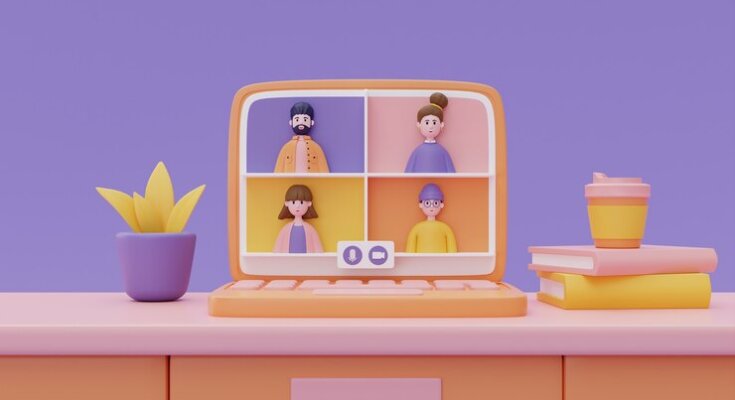In the era of remote work, effective communication and collaboration among teams are more important than ever. Traditional methods like video calls, emails, and documents sometimes fall short when conveying complex information. This is where 3D animation comes into play, offering dynamic, engaging, and visually rich solutions for remote team collaboration. Utilizing 3D animation services allows businesses to overcome geographical barriers, enhance communication, and improve productivity.
Table of Contents
1. Enhancing Visual Communication
One of the most significant benefits of using 3D animation for remote teams is its ability to enhance visual communication. Remote work often relies on written instructions or video conferencing, but these methods can sometimes fail to convey the full context of complex ideas.
3D animation provides an interactive and engaging way to visualize concepts, designs, and products. Whether it’s a 3D product animation that shows how a new piece of technology works or a visual representation of a process, teams can better understand the subject matter and collaborate more effectively. By illustrating details that might be missed in static images or descriptions, 3D animations bridge the gap between theoretical ideas and practical execution.
2. Facilitating Real-Time Collaboration
Modern 3D animation software supports real-time collaboration, which is especially valuable for remote teams. Platforms like Blender, Maya, and Unity allow multiple team members to work on a 3D project simultaneously, irrespective of their physical location. This means that designers, animators, and stakeholders can collaborate in real time, making immediate changes and discussing adjustments as they occur.
For example, when developing a 3D product animation, different departments (design, engineering, marketing) can interact with the 3D model, offering feedback and suggestions instantaneously. This reduces the need for multiple rounds of revisions, streamlines the workflow, and accelerates the project timeline.
3. Streamlining Product Development and Prototyping
In industries like manufacturing, engineering, and architecture, developing products remotely poses challenges, especially when it comes to product design and prototyping. However, 3D animation services make it easier to visualize, test, and refine products in a virtual environment.
With 3D product animation, teams can create realistic models and simulations of products before they are physically produced. This virtual prototyping allows for thorough testing, reducing the need for physical prototypes and saving time and resources. By visualizing different iterations, teams can collaborate on product improvements and optimize designs before they move to production. Additionally, remote teams can share these animated models with clients or stakeholders to receive immediate feedback, ensuring alignment throughout the development process.
4. Improving Training and Onboarding for Remote Teams
Remote work has made training and onboarding more challenging, but 3D animation offers a compelling solution. Instead of relying solely on documents, slide presentations, or lengthy videos, companies can create engaging training materials using 3D animation.
For instance, 3D product animation can illustrate the use of machinery, tools, or software in a highly detailed and interactive manner, allowing new employees to visualize and understand processes better. Animated tutorials are more engaging and easier to follow than text-based guides, ensuring that remote employees grasp the essential information quickly. Additionally, 3D animation can simulate real-world scenarios, providing remote teams with practical training experiences in a virtual environment.
5. Supporting Cross-Functional Collaboration
Remote teams often consist of individuals from various departments, each bringing their expertise to the table. However, cross-functional collaboration can be difficult when team members have different technical backgrounds. 3D animation services help bridge this gap by providing a common visual platform where all team members can interact and share ideas, regardless of their department.
For example, in product development, engineers, designers, and marketers may need to collaborate closely. 3D animations allow each team member to see a product from different angles and understand its components, features, and functionality. This shared visual experience encourages cross-functional collaboration, ensuring that all team members are on the same page and can work together seamlessly, even from different locations.
6. Facilitating Global Communication with Clients and Stakeholders
Remote teams often work with clients and stakeholders from around the world. Effective communication becomes critical when conveying ideas, project progress, or new product developments to these external parties. 3D animation serves as a powerful tool for engaging clients, as it transcends language barriers and cultural differences.
Using 3D product animation, teams can create compelling presentations that showcase products in action. For instance, a technology company developing a new device can animate its functionality, demonstrating how it operates, its features, and its advantages. Such presentations are more impactful and easier for clients to understand than traditional methods. Moreover, animated presentations can be customized for different audiences, ensuring that the information resonates with stakeholders from various backgrounds and industries.
7. Enhancing Marketing and Sales Efforts
Remote work also impacts marketing and sales efforts, as teams must find ways to engage customers and clients digitally. 3D animation services offer a unique way to capture attention and communicate product value through visually appealing content.
For example, companies can create animated product demonstrations for their websites, social media platforms, or virtual trade shows. These 3D product animations showcase products interactively, allowing potential customers to explore features and benefits as if they were seeing the product in person. By incorporating interactive elements, companies can engage customers and build a deeper connection, ultimately driving sales and conversions.
8. Building a Virtual Collaboration Hub
With the advancements in virtual reality (VR) and 3D animation technologies, remote teams can create immersive virtual collaboration hubs. These spaces serve as a digital office where team members from around the world can meet, collaborate, and work together as if they were in the same physical location.
Through VR and 3D product animation, teams can interact with virtual prototypes, manipulate 3D models, and brainstorm in real time. This immersive environment enhances collaboration, creativity, and innovation, leading to more effective problem-solving and decision-making. Such digital spaces not only make remote work more productive but also create a sense of community and shared purpose among remote team members.
9. Increasing Engagement and Retention
Maintaining employee engagement and retention is a challenge for remote teams. Without face-to-face interaction, it’s easy for employees to feel disconnected from their teams and projects. 3D animation, however, can increase engagement by providing a visually stimulating and interactive platform for communication and collaboration.
For example, using 3D animation services to create animated team meetings or virtual events makes remote work more engaging and enjoyable. Teams can also gamify certain aspects of their work, such as using animated progress trackers or virtual badges for accomplishments, to boost motivation and participation. By making work more interactive and visually engaging, 3D animation helps remote teams stay connected and committed.
10. Minimizing Miscommunication and Errors
Miscommunication is a common issue in remote work settings. When instructions or project details are not conveyed clearly, mistakes can occur, leading to delays and additional costs. 3D animation services help minimize these issues by providing a clear, visual representation of information that all team members can understand.
For example, when developing a complex product, 3D animations can demonstrate assembly processes, component placements, and operating procedures. By showing rather than telling, these animations ensure that all team members, regardless of their role or location, have a consistent understanding of the task. This clarity reduces the chances of miscommunication, ensures higher accuracy in project execution, and minimizes costly errors.
11. Cost-Effective Solution for Remote Collaboration
Investing in 3D animation services may seem like a significant expense at first, but it proves to be a cost-effective solution in the long run. Virtual prototyping and simulation through 3D product animation reduce the need for physical prototypes, saving manufacturing and material costs. Similarly, animated training materials eliminate the need for in-person training sessions, minimizing travel expenses and associated costs.
Moreover, 3D animation helps speed up project timelines by streamlining communication, improving collaboration, and minimizing errors. These efficiencies result in lower project costs and a higher return on investment, making 3D animation a valuable tool for remote teams seeking to optimize their workflows.
12. Adapting to Future Technological Advances
As technology continues to evolve, the role of 3D animation services in remote collaboration will only expand. Emerging technologies such as augmented reality (AR), artificial intelligence (AI), and machine learning will integrate with 3D animation platforms, enabling even more advanced capabilities. Remote teams can expect to benefit from AI-driven automation, making 3D modeling and animation more efficient, and AR enhancements, which will provide more immersive experiences.
By investing in 3D animation now, companies position themselves to take full advantage of these future developments. Teams that are already proficient in using 3D animation for collaboration will have a competitive edge as new technologies emerge.
Conclusion
The shift to remote work has created new challenges for communication and collaboration, but 3D animation services offer a powerful solution. From enhancing visual communication to facilitating real-time collaboration, streamlining product development, and supporting cross-functional teamwork, the benefits of 3D animation are vast. Businesses that integrate 3D animation into their remote work strategies can overcome geographical barriers, increase efficiency, and stay competitive in an increasingly digital world. Whether through 3D product animation or other 3D visualizations, this technology is shaping the future of remote team collaboration, making work not only more productive but also more engaging and connected.




